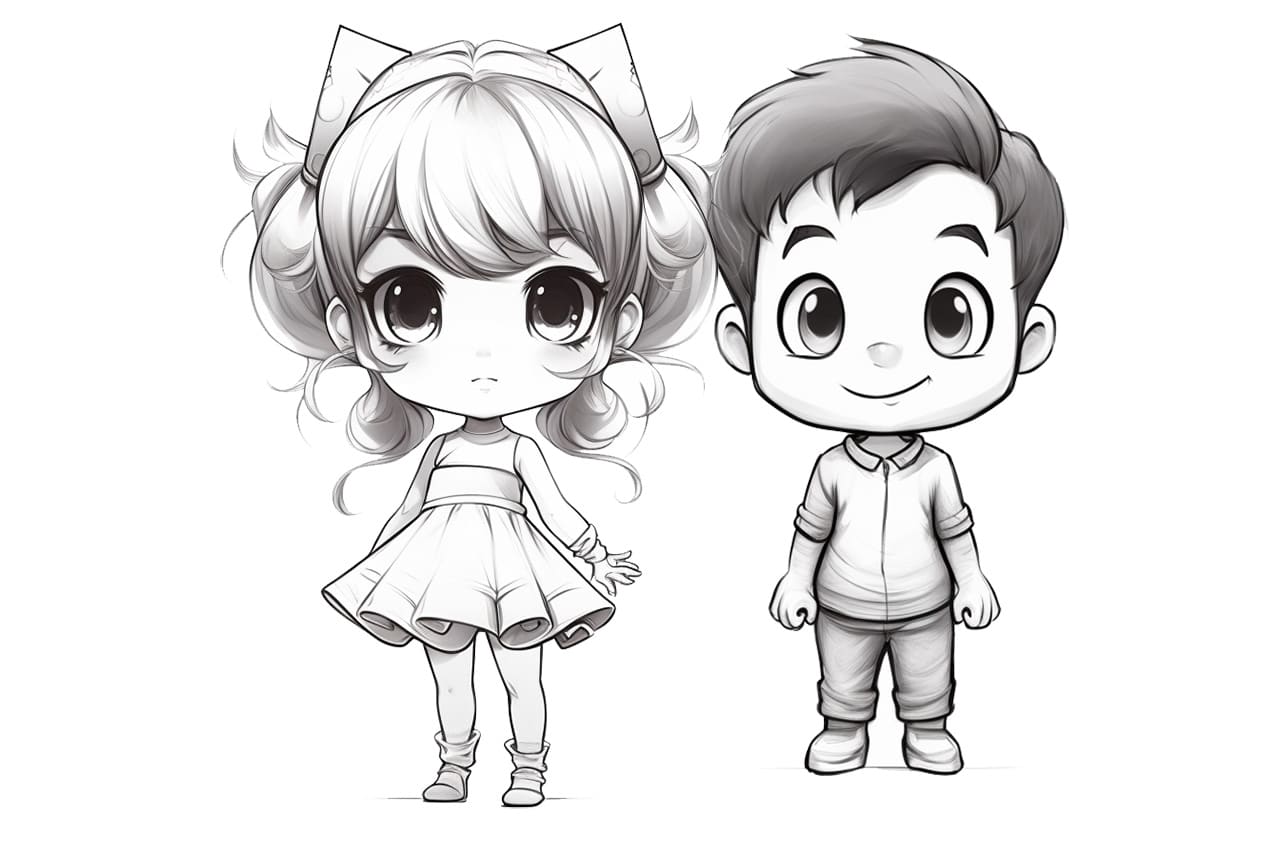
Welcome to this step-by-step guide on how to draw a chibi body! Chibi is a Japanese term used to describe a style of drawing that features exaggerated, cute, and simplified versions of characters. Mastering the basics of drawing a chibi body is a great foundation for creating your own adorable characters. In this article, we will explore the process of drawing a chibi body, from proportions to adding details. So grab your pencil, paper, and let’s get started!
Materials Required:
To begin, gather the following materials:
- Pencil
- Eraser
- Paper
- Ruler (optional for more precise measurements)
- Colored pencils or markers (optional for adding color to your drawing)
Step 1: Basic Guidelines
Start by drawing a simple circle for the head. This will serve as the foundation for the chibi body. Make sure the circle is proportionate to the size you want for your character.
Step 2: Body Shape
Draw a rounded rectangle or an oval shape below the head to form the body. The size of the body will vary depending on the character and style you want to achieve. Chibi bodies are often short and stubby, so keep that in mind while drawing.
Step 3: Arms and Legs
Next, draw two lines extending from the sides of the body to form the arms. These lines should be curved to give the chibi body a cute and chubby appearance. For the legs, draw two lines extending downward from the bottom of the body. Again, these lines should be slightly curved.
Step 4: Hands and Feet
At the end of each arm, draw small circles to represent the hands. Chibi hands are usually quite simplified, often resembling small mittens or rounded shapes. Similarly, draw small oval shapes at the ends of the legs to represent the feet. These can also be simplified and rounded.
Step 5: Facial Features
Now it’s time to add some adorable facial features to your chibi character. Draw two large circle-shaped eyes within the head. Chibi eyes are usually oversized and take up a significant portion of the face. Add a small curved line beneath each eye to represent the lower eyelid. Then, draw a small curved line for the mouth, slightly curving upwards at the ends to create a smile. Finally, add a small circle or oval shape for the nose below the eyes.
Step 6: Hair
Chibi hairstyles can vary widely, so feel free to experiment with different styles. Start by drawing the basic shape of the hair around the head. Keep in mind that chibi hair tends to be simplified and stylized. Add simple lines or curves to indicate the hair strands and use small, rounded shapes for details such as hair clips or accessories.
Step 7: Clothing
Chibi clothing is often cute and playful. Draw the desired clothing style on your character, whether it’s a simple dress, shorts, or a t-shirt. Remember to keep the clothing proportions in line with the chibi body, avoiding highly detailed designs.
Step 8: Adding Details
To give your chibi character some personality, consider adding details such as facial expressions, accessories, or patterns on the clothing. Use small, simple shapes or lines to create these details, keeping in mind the chibi style.
Step 9: Refining and Inking
Once you are satisfied with your chibi body, go over the lines you want to keep with a darker pen or marker. This will help define the final drawing and make it stand out. Alternatively, you can trace over your pencil lines with a pen or fine-tip marker to create a clean, finished look.
Step 10: Coloring (Optional)
If you prefer to add color to your chibi drawing, grab your colored pencils or markers and carefully color in your character. Chibi drawings often use bright and vibrant colors, so don’t be afraid to experiment and have fun with your color choices.
Congratulations! You’ve learned step-by-step how to draw a chibi body. Starting with a basic circle for the head, you built the body, arms, legs, and facial features. Along the way, you added unique details and clothing to bring your chibi character to life. Remember, practice is key to improving your drawing skills, so keep experimenting and trying new ideas. Now it’s time to create your own chibi characters and let your imagination run wild!
Fun Facts About Chibi Bodies
- The word “chibi” is derived from a Japanese slang term meaning “small” or “short person,” perfectly describing their compact form.
- Chibi bodies feature exaggerated proportions, typically with oversized heads and tiny bodies, giving a cute and cartoonish appearance.
- Chibis are often used to depict characters in humorous or whimsical situations in manga and anime.
- Some artists use chibi drawings as a warm-up exercise, as their simplified structure requires less detail and helps develop creativity.
- Chibi bodies can express a wide range of emotions with just a few lines, making them a go-to choice for comedic effect in storylines.
- Chibi-style art is not limited to humans; animals and mythical creatures can also be drawn with chibi proportions for added charm.
- While traditionally flat in color and design, chibi drawings have evolved to include more detailed shading and texturing for depth.
- Creating a chibi version of a popular character has become a fun trend, with many artists interpreting their favorite characters in this style.
- Chibi art workshops are gaining popularity worldwide, offering an introduction to Japanese pop culture aesthetics.
- In markets and conventions, chibi art is often featured on merchandise such as keychains, stickers, and apparel, demonstrating its wide appeal.
Suggestions for Scenes and Settings for Chibi Body Drawings
- Chibi Classroom: Illustrate a scene with chibi students eagerly participating in a class, with chalkboards, desks, and oversized pencils.
- Fantasy Adventure: Depict a chibi hero on an epic quest complete with a mini dragon, a cartoon map, and a tiny sword.
- Chibi Cooking Show: Create a lively kitchen setting where chibi chefs whip up culinary creations with laughter and flour spills.
- Chibi in Space: Design a cosmic journey with chibi astronauts floating in zero gravity amidst stars and little alien friends.
- Chibi Concert: Picture a music festival where chibi musicians rock out on stage, complete with tiny instruments and cheering fans.
- Magical School: Draw a whimsical scene of chibi students practicing spells in a fantasy school complete with bubbling potions and flying books.
- Winter Wonderland: Illustrate a snowy day where chibis build snow chibis, have snowball fights, and sip hot cocoa by the fire.
- Chibi Beach Day: Capture a sunny scene with chibis enjoying the beach, complete with sandcastles, surfboards, and ice cream cones.
- Chibi Jungle Safari: Create an adventure with chibis exploring the jungle, surrounded by mini wild animals and dense foliage.
- Chibi Library: Design a serene library setting with chibi readers lost in books, plush bean bags, and towering shelves.









